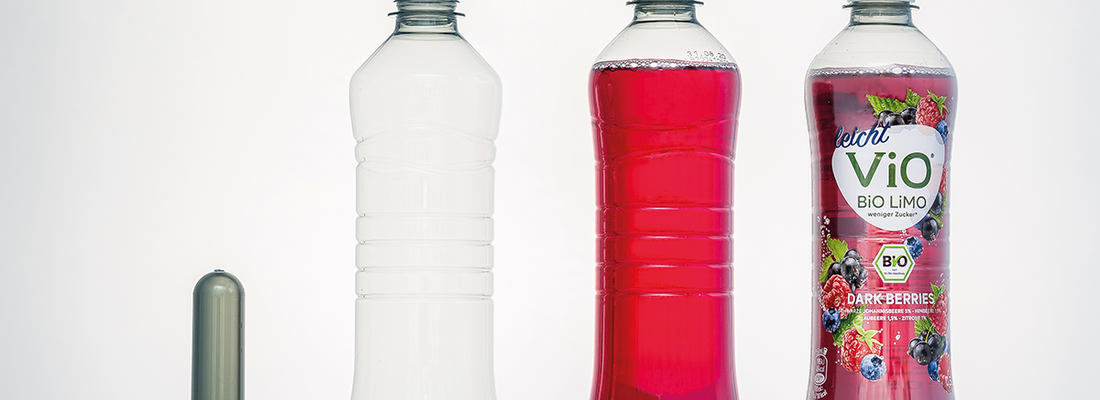

With the corona pandemic, we are in a global crisis of unprecedented magnitude. What does that mean for you? And what advice can you give when you talk about crisis management and your area of responsibility - supply chain?
Kunerth: In my opinion, when it comes to communication, empathy and flexibility are most important...
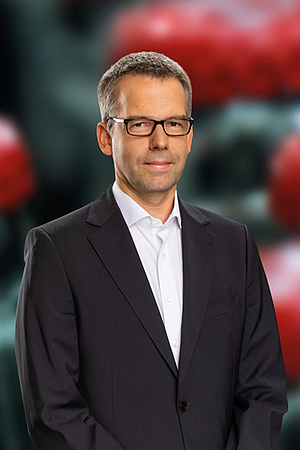
With the corona pandemic, we are in a global crisis of unprecedented magnitude. What does that mean for you? And what advice can you give when you talk about crisis management and your area of responsibility - supply chain?
Kunerth: In my opinion, when it comes to communication, empathy and flexibility are most important. The pandemic brought significant changes and challenges for each of our colleagues. Whether it is working in the home office or dealing with colleagues who are directly or indirectly affected by Covid-19: here, it is essential to communicate empathically. Flexibility in dealing with the particular situation is just as important in the crisis teams because the general conditions change constantly and you have to reorient yourself again and again. “We are driving on sight”, this has been voiced repeatedly from politicians. And that certainly applies to crisis teams. For us, that meant: reacting quickly, e.g. when the lockdown occurred. And at the same moment, we started thinking about how to get out of this lockdown. How do we restart the supply chain? All this against the background of quite volatile market conditions, so that planning processes are no longer as predictable as it is at normal times.
How important is external communication? Are you always open and honest? Or do you sometimes have to be tactical?
Kunerth: You have to be very honest. Transparency is crucial. I don’t believe in holding back information but always communicate in a solutionoriented manner. Lamenting, conveying helplessness - that does not work.
They say that in good times management is more of a sure-fire success. The experts show up when things get tough. And the real masters are born in fire. Where do you place yourself? Do you love the challenges, or would you like a little less right now?
Kunerth: I do like challenges. Special conditions require quick and situational action. The corona crisis started in early March and is now in late June. At some point, you have to leave the crisis mode again as an organization. Now, after three months, we have reached a kind of “new normal”. Also, when it comes to communication.
During this crisis, have your activities, your focus, changed? Or are they just other means to continue to pursue your goals?
Kunerth: At first glance, the way I work didn’t change that much at all. Virtual meetings have not been new to me since the teams I work with are spread across Europe. For many in the company, however, the working world looked different from one day to the next. Over the past three months, I have focused on ensuring security for our colleagues in the crisis team. Maintaining the supply chain was also one of my tasks. That is not only true in the crisis, but here it became particularly evident how important it is to maintain excellent and strategic cooperation with suppliers. That is how we managed to meet the challenges of the past few months.
Coca-Cola has cut back on commercial advertising. Coca-Cola posts read “Together we can”. You have shifted your priorities. A three-digit million amount was donated worldwide. Would Coca-Cola prefer the silent helper in the background?
Kunerth: Given the grave situation we were in with the coronavirus, we found it inappropriate to continue our marketing programmes in Germany as planned. Safety and well-being of our employees and the communities in which we live and work are our top priorities. The CocaCola Company, along with its bottling partners and The Coca-Cola Foundation, donated $ 120 million worldwide for COVID-19 relief efforts. The commitment is not limited to donating money. We tackle where help is needed. In Germany, we supported the German Red Cross (DRK). Our focus was evident: help. We had to create the structures to ensure that the donations arrive where they are needed. We did that without talking about it. Hence your impression that you didn’t notice that much. However, information about this can now be found on our website and in our social media activities. But rather quiet than loud.
We all know the discussion about sustainability. You also deal with this in times of crisis and react to changing conditions in the markets.
Kunerth: Sustainability has always been an essential issue for us. We developed our sustainability strategy “This is Forward” in 2017. In Germany, we call it “Handeln.Verändern” (Acting. Change). It covers six subject areas: packaging, beverages, society, water, climate, sustainable procurement. They base on the sustainability goals of the United Nations; we designed them after many consultations, discussions, meetings, also in exchange with external stakeholders. “Handeln.Verändern” is embedded in Coca-Cola’s European sustainability strategy. The development of a long-term strategy - we mainly focus on a period up to 2025 - has proven very successful. Despite the current situation, we continue to stick to our goals.
From the historical description of the development of Coca-Cola, one gets the impression that sustainability has always been part of the company’s DNA. One speaks about the development of PET refillable bottles, the light weighting programs or the Plant Bottle. All of this is, of course, also presented on social media today. Today, however, another wave is spilling over the social media channels. I remember the Greenpeace campaign, the poster with the diver, and the sign that said: Coca-Cola, is this yours? Whether this campaign is close to reality or not - has it not been possible for over 70 years to make it clear to consumers how sustainable Coca-Cola is?
Kunerth: In the past, we may not have communicated our commitment to sustainability aggressively enough to the general public. At the same time, I believe that where we have spoken at eye level with stakeholders such as our industrial partners, suppliers, NGOs, we have been able to communicate our messages very well. We make it clear what sustainability means to us and which strategies we use to implement it. At the same time, as a Coca-Cola system, we have to face up to our responsibility globally, even if the return rate of our packaging is extremely high in Germany, primarily due to the deposit system. But we also have to communicate that. Often consumers do not know that we, for example, are the largest refillable provider in Germany. And refillables is one of the packaging options that is considered very advantageous from a sustainability perspective.

You have to consider the delivery routes in particular for refillable products. Compared to refillable glass systems, PET refillable bottles have clear advantages in terms of carbon footprint. But is one-way PET, in the full sense of the word, one-way? Finally, the material runs in a closedloop
Kunerth: Provided that we succeed in keeping the PET material in its purity in circulation, and in avoiding downcycling and if we then produce new bottles from the recycled material, these bottles are certainly not typical single-use products. These bottles have multiple lives. If you then look at the respective systems, such a “one-way” (non-refillable) PET bottle can, from the CO2 balance, also compete against refillable systems. These comparisons always have to be considered very individually according to the type of packaging and sales channel.
Due to the pandemic, the consumption of plastics has increased significantly. E.g. for packaging because product protection has come to the fore. Or the individual protection with masks or disinfectants. How do you assess the consumer view: are plastics even seen with different eyes? Does the consumer relate the increase due to requirements such as protection and security? Or does he forget that he caused it himself and will he complain in the end that the plastic flood has increased further?
Kunerth: That is complex. I see three levels: Studies show that pandemic places even greater emphasis on sustainability. We will see how this affects in the long term. The second level shows short-term effects: It can acutely be a kind of shift. I can see that from my perspective: due to the situation, I consume a lot more at home. There is no daily visit to the company restaurant, no restaurant visits at all - during business trips, of course also privately. So I also produce more waste at home. And the third facet is product hygiene. Consumers felt - and still do - that packaged products are safe. That could explain the increase in packaging waste. All these points make it all the more clear that we have to pay more attention than ever to design and manufacture packaging in such a way that the material can run in circulation for as long as possible.
Currently, we are observing corona outbreaks in personnel-intensive production plants in Germany and other countries. Acutely, it affects the meat processing industry. Does that make you sit up and take an even closer look to ensure safety in the production facilities?
Kunerth: Right from the start, we implemented the hygiene measures that were also specified by public authorities. Everyone knows the triad: distance, mask, washing hands. We have a very cooperative atmosphere; we give consideration; the level of mutual understanding and empathy is high. I think it is clear to everyone that it depends on the individual, that it is about their health, that of the family. As CocaCola, of course, we have to consistently ensure that all of our employees can and will observe the hygiene measures. That is achieved through shift models, team building, and home office wherever possible. All of this helps to maintain sensitivity.
The pandemic is ruling all of our lives at the moment. But topics that were previously inevitable are not suddenly gone. Let’s talk about sustainability and recycling. Coca-Cola has been running the “World without Waste” campaign since 2018. It’s about the packaging and its design; it’s about collecting the waste, building closedloop systems, working with partners. Now the conditions in the countries are different. A world without waste naturally means all regions of the world. The technical side is easy to describe: recycling-compatible design - that’s doable. Collection - the technical possibilities are there. Is the consumer your partner here?
Kunerth: Yes, the consumer is an essential partner. If we commit to taking back one for every bottle we bring to the market, then the consumer plays a crucial role. The situation in the markets is very different. We here in Germany have a system - for one-way and for refillable - that incentivizes the consumer when he brings his bottles back. Bringing them back has become a habit for German consumers. Not everywhere, people are aware that the supposed waste is a raw material, valuable material. Consumers must take for granted that something new can emerge from the material I used. We support the introduction of deposit systems. We rely on our competition partners to jointly establish efficient systems as part of an alliance. Wherever there are no deposit systems yet, we need partners who help us to avoid littering. We are currently supporting two major initiatives for collecting plastic waste: Mares Circulares on the beaches of the Mediterranean and the Benioff Ocean Initiative, which supports innovative projects for collecting and avoiding plastic waste on nine selected rivers.
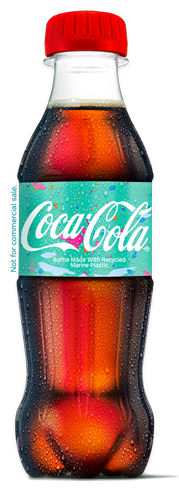
Big goals like “A World Without Waste” always encounter resistance. At which windmills are you tilting?
Kunerth: Point 1: It is not always easy to get shoulder to shoulder with many. We won’t make it alone. Point 2 comprises three questions: How do I keep the material that I need in a select quality in a loop? I have to prevent food-grade PET from migrating from the stream to other industries. Second, how do I make sure that this material flow is not contaminated externally? And third, how do I get all the bottles back? These are the questions we have to solve. We invest in research and development or help partners to invest in research and development. Last October we made a sample bottle with parts made of sea plastic. We were able to prove that there are processes to produce high-quality beverage packaging from used plastics.
How do you feel about biodegradable packaging today?
Kunerth: In my view, the central task is to keep material in circulation so that it remains in the system to a large extent and can be reused. And consumers help with that; the habit of returning bottles and crates makes it possible. I see compostable containers rather critically because they could change the attitude of consumers so that they pay less attention to packaging and thus littering increases.
What is your opinion on packaging made from renewable raw materials? Coca-Cola has much experience with the Plant Bottle. What do you think about making polyester bottles entirely from renewable raw materials?
Kunerth: We have been dealing with the Plant Bottle for a long time. The technology has meanwhile been released so that now it can be used by everyone. I think it is the interplay between recycled PET and PET from renewable raw materials that leads us to sustainable packaging in the medium term. So it’s all in the mix: we’ve already done it in the ViO bottle. ViO bottles contain recycled PET and plant based PET. We also still add virgin PET, but that is changing. In my view, the balance leads to even more sustainable packaging. (fig. 3)
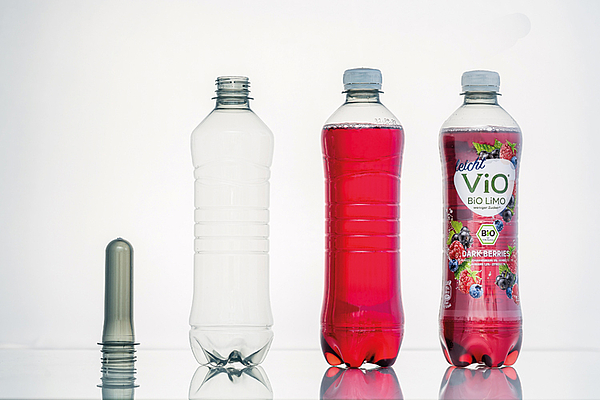
What are the challenges in the material mix?
Kunerth: It is essential to prevent contamination of the recycling stream. That can be achieved by identifying, coding and sorting. In principle, you should not stop researching whether there are new optimization options.
Digitalization in the supply chain of production to save costs and increase efficiency: Do you focus strongly on this? Or is digitization not currently at the top of the agenda?
Kunerth: The digitization of the supply chain is very high on the agenda, especially with our Bottling partner CCEP. Let us consider the seemingly banal: the error diagnosis. How far can I use data analysis and sensor technology to predict the condition, stability, maintenance intervals of my line? How well can I link this with other parameters to be able to make forward-looking decisions, shift by shift? I think these are things that are more and more part of it today. We can save much time, also costs. Second example: remote maintenance. Especially in the pandemic, it was a great advantage that the companies had adjusted to it early on. In the past, you had to pick up the phone and receive instructions. Today, the mechanic looks straight into the control cabinet through smart glasses. That is extremely efficient. The developments go all the way to big data applications to improve planning processes. Or the potential of 3D printing. Optimally, spare parts can be printed on-site.
Let’s spin a future scenario for beverage packaging: where will it go? How far is Coca-Cola?
Kunerth: A whole range of possibilities opens up here. Digitization will take us further here. But there won’t be one thing either: a one-fits-all scenario, i.e. the one packaging that solves all problems. Just as little as there will be the most sustainable packaging. There are simply different types of packaging for a wide variety of sales and consumption occasions. The respective packaging is right and necessary there and optimized from a sustainability perspective.

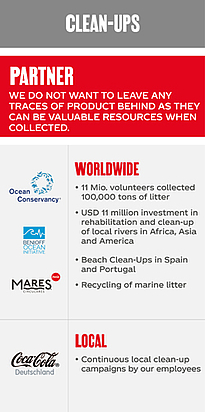
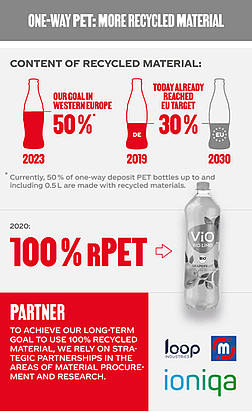
(Photo credit: Coca-Cola)
What potential do you see in digitalization?
Kunerth: In my view, the “smart bottle” has enormous potential for improving sustainability. Many fields open up here: With coding, with chip technologies, we will be able to overcome barriers in the reusable system. The individualization of bottles means an immense variety of containers. Smart technologies will optimize sorting and handling. Or monitoring product quality. There are already today, albeit on a small scale, medications or comparable products for which, based on their temperature history, the expiry date calculates and updates itself. Smart technology can bring massive support for food waste. Because the “best before” is no longer determined based on statistical knowledge before the product leaves the factory, but rather that the shelf life defines itself, depending on the ambient conditions. A bottle in a beverage kiosk is exposed to different conditions than one in a cold warehouse. Smart technology can also influence the following decision: Will individual bottles or universal bottles prevail? Technologies such as smart labelling or digital printing certainly offer much potential. The interesting question is: Can this compensate for the loss of an individualized bottle shape?
Can it?
Kunerth: In some sales channels with the packaging placed there, this is certainly possible, and other types of packaging design can represent an adequate replacement for individualization through the bottle shape. In other areas where, e.g. one of our icons, the glass contour bottle, is at home, I can hardly imagine replacing the individual containers.
Are there any trends outside of digitalization?
Kunerth: Personalization will gain importance: “Bring your own bottle”. We know the principle from coffee shops. The interesting question is: What does a sustainable bottle look like there? Today you bring your coffee mug and have it refilled. Can we also imagine this trend for beverage packaging? Individualized filling, personalized filling. At trade fairs, suppliers are already showing how it can look like: Filling on demand. A lot will happen there. We have to keep an eye on recyclability in all developments. Recyclability must always be guaranteed. Certainly new materials with better barrier properties for one-way and reusable will play a role in the future.
Coca-Cola contributed to the success of PET packaging. What role does PET play in the packaging mix at Coca-Cola today? Does the phrase apply “No matter whether PET, aluminium or glass - the main thing is that the sales figures are satisfying”?
Kunerth: The lifecycle analysis is crucial. We look closely at each type of packaging, for each size of packaging. We ask ourselves: How can I make individual packaging more sustainable using recycled materials or lightweight? And the occasion for consumption plays a role. Glass is successful in gastronomy; when I do sports or go to festivals, glass is not my first choice. When I buy beverages as a private person, weight plays a role, also in logistics. We take a very close look at all of this. I think it’s the mix that matters. The following applies to one-way PET bottles: increased rPET shares are drivers of sustainability in this segment. And that’s why we’re increasing it. So, we do care about every type of packaging in which we sell our products.

Fridays for Future: Due to the pandemic, the fight for the environment currently seems rather calm. What power do you see in this initiative?
Kunerth: It has become a bit calmer at the moment. But that is certainly only temporary. That will continue to accompany us - and that’s right. I see the “Fridays for Future” initiative as a kind of spearhead. It helps everyone to become more aware of the problem. It is indisputable that we have to tackle climate change actively. I find it justified that the young people hold up the mirror to us and claim: “Do something!”. We are not idle at all, on the contrary. CO2 balances have played a role for us for many years. Also energy savings, not only in the packaging area. This and more has long been part of our business and strategic plans. Even before 2017, when we adopted the topic of climate in our strategy paper. Green electricity, increased efficiency, combined heat and power plants, how can I combine that with the production of CO2, which I can use later. Is this all already at a maturity level for industrialization? You have to start to try it out. Conclusion: The protection of the environment must remain in the foreground. I am convinced that awareness of a sustainable lifestyle will increase. The pandemic will do its part. We have all seen how vulnerable the entire global system can be. In this respect, this trip will not end.
(The interview was conducted via video conference.)
The comPETence center provides your organisation with a dynamic, cost effective way to promote your products and services.

magazine
Find our premium articles, interviews, reports and more
in 3 issues in 2025.




